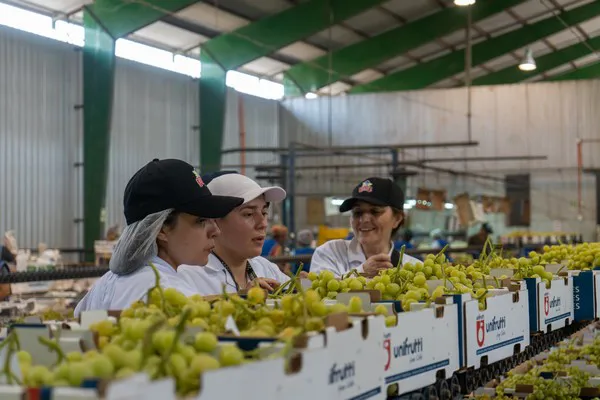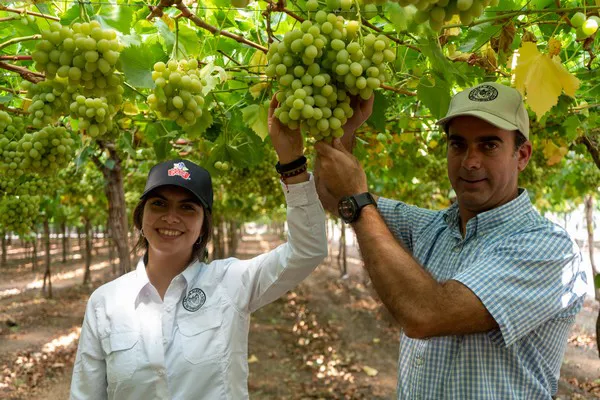The last few years have been challenging for the Chilean table grape industry due to weather events, logistical problems, and more. “As a result, this year is vital for Chilean growers, and they have an opportunity to show that they can still deliver an outstanding product,” says Michael DuPuis with Divine Flavor.
The company partners with table grape growers throughout Chile’s central growing region, where production is now ramping up. The country is a key supplier of table grapes, their number one agricultural export product, but the headwinds the industry has been facing, have resulted in acreage going down. As a result, this year’s total production is expected to be 65-67 million boxes, a single digit percentage decrease from last year.

Chile’s headwinds
“Chile has been slower to pivot into new varieties due to quarantine requirements,” says Divine Flavor’s Antonio Escobar. “It would be difficult to mention an exact number, but there’s still a significant number of traditional varieties coming into the North American market,” he added.
Another challenge has been the overlap with other production regions. “Chile loses attractive market windows every year,” commented Escobar. “There is a global grape oversupply and Chile’s production overlaps with many other grape growing countries.” First of all, the beginning of Chile’s season overlaps with Peru, a country that takes a larger part of the North American market. At the end of the Chilean season, Mexico already hits the market and has closer proximity to the United States. If that wasn’t enough, harvest fully overlaps with South Africa, a country that focuses on exports to Europe.
Not only does Chile’s neighbor Peru have the benefit of growing a larger share of new varieties, grapes from the country can also enter the US without fumigation. “Chile is now pushing for a Systems Approach that would allow the fruit to arrive without fumigation,” shared Escobar. “This could be key for Chilean grapes as it would improve the quality of the fruit upon arrival.”

Differentiation
It has been a survival of the fittest. “The only way to have an edge in this environment is by having the best quality and flavor,” said Escobar. “Both have to be exceptional, and our growers in Chile understand this very well.” The partnerships Divine Flavor has with Chilean growers are very strategic and focused on growing high-flavor grapes. “We don’t just plant a bunch of varieties, we look at it strategically,” commented DuPuis. “We are working with talented and very passionate growers who are excited for the new season and hope to be back on track. They understand the reality and are addressing it by putting effort in growing outstanding fruit. From what we’ve seen so far, Chile looks to respond better this year.”
With the season ramping up, peak grape production is expected early March. Harvest will continue until late March with fruit arriving into the US until mid-May.
 For more information:
For more information:
Michael DuPuis
Divine Flavor
Tel: +1 (520) 281-8328
Email: [email protected]
www.divineflavor.com










